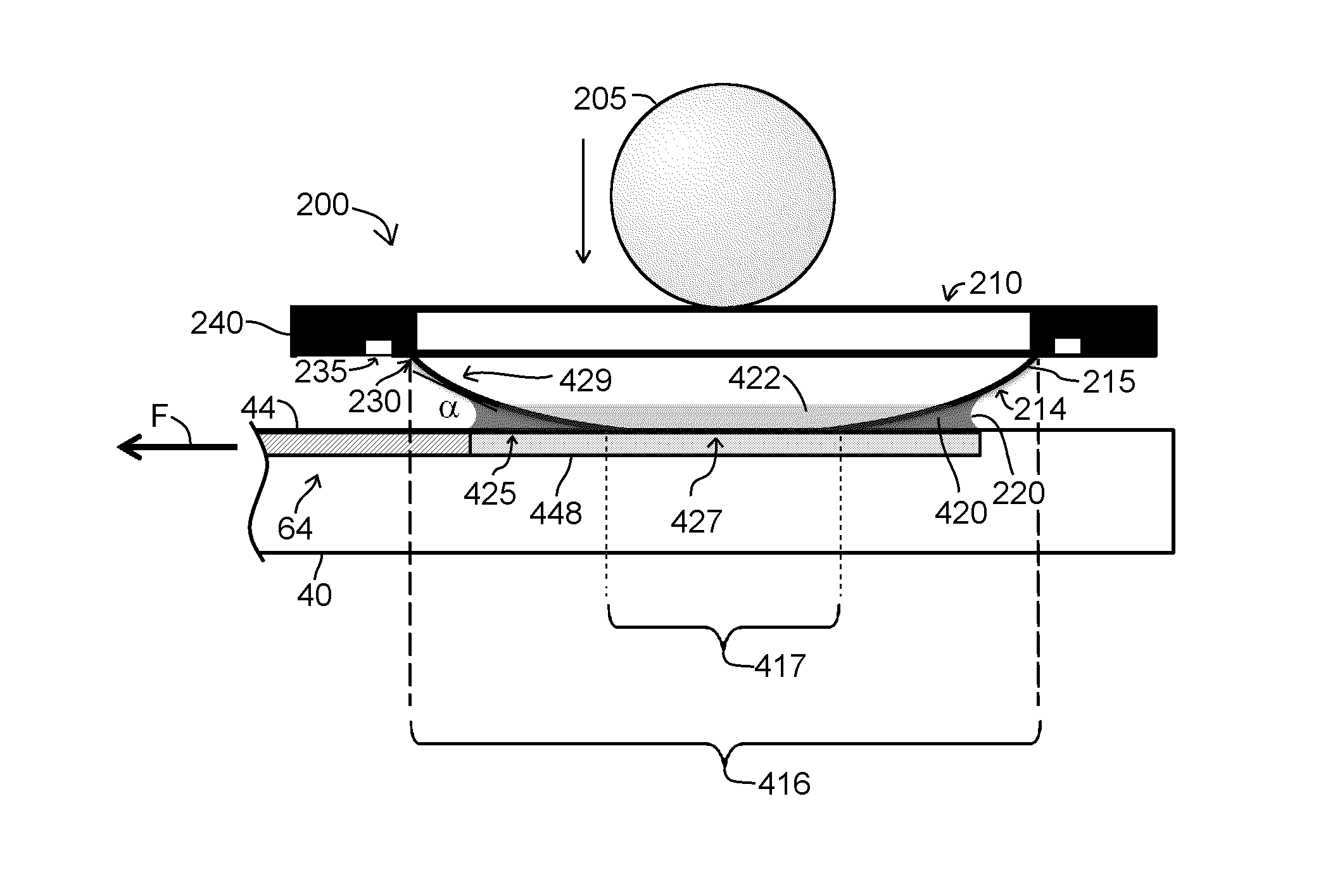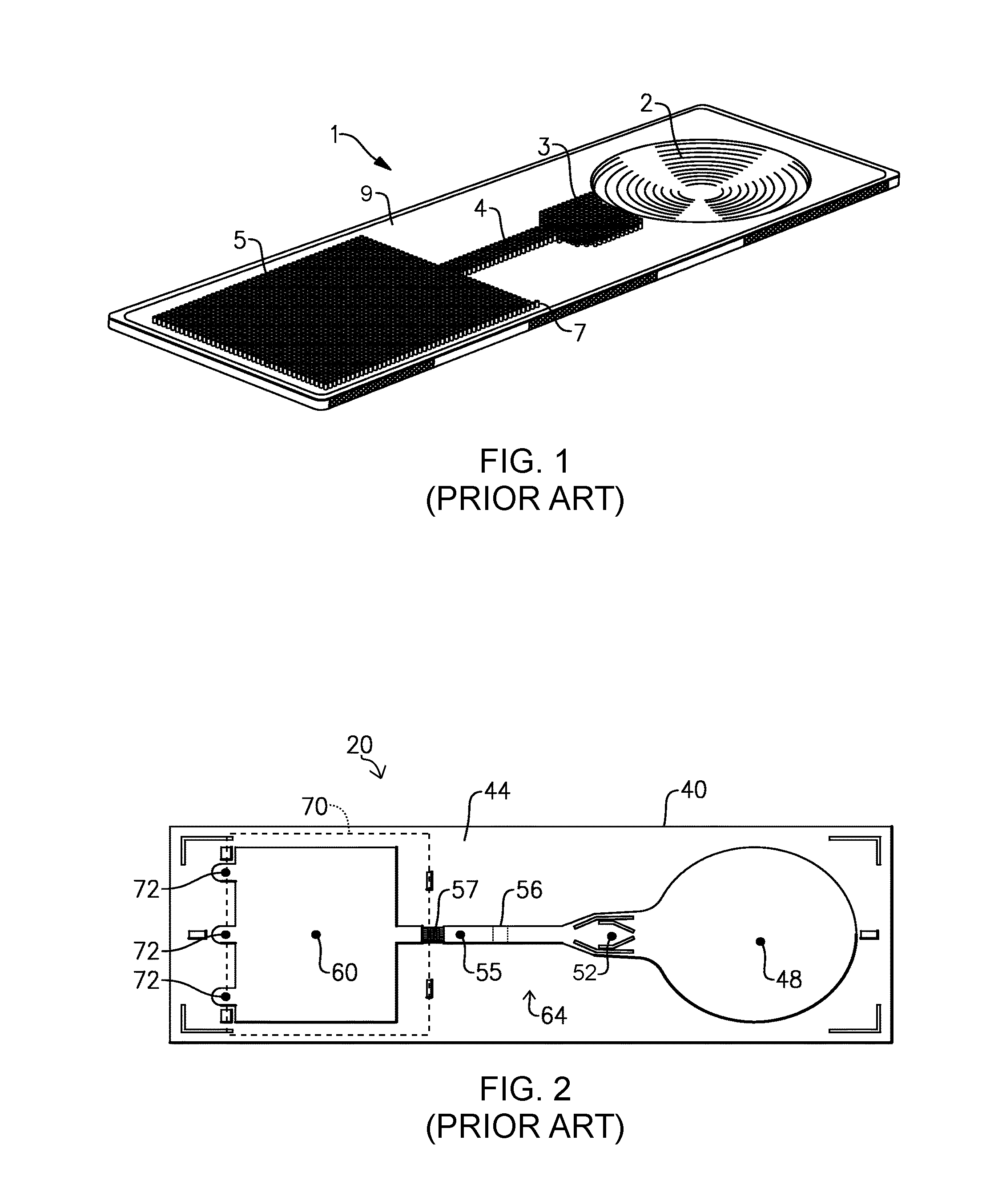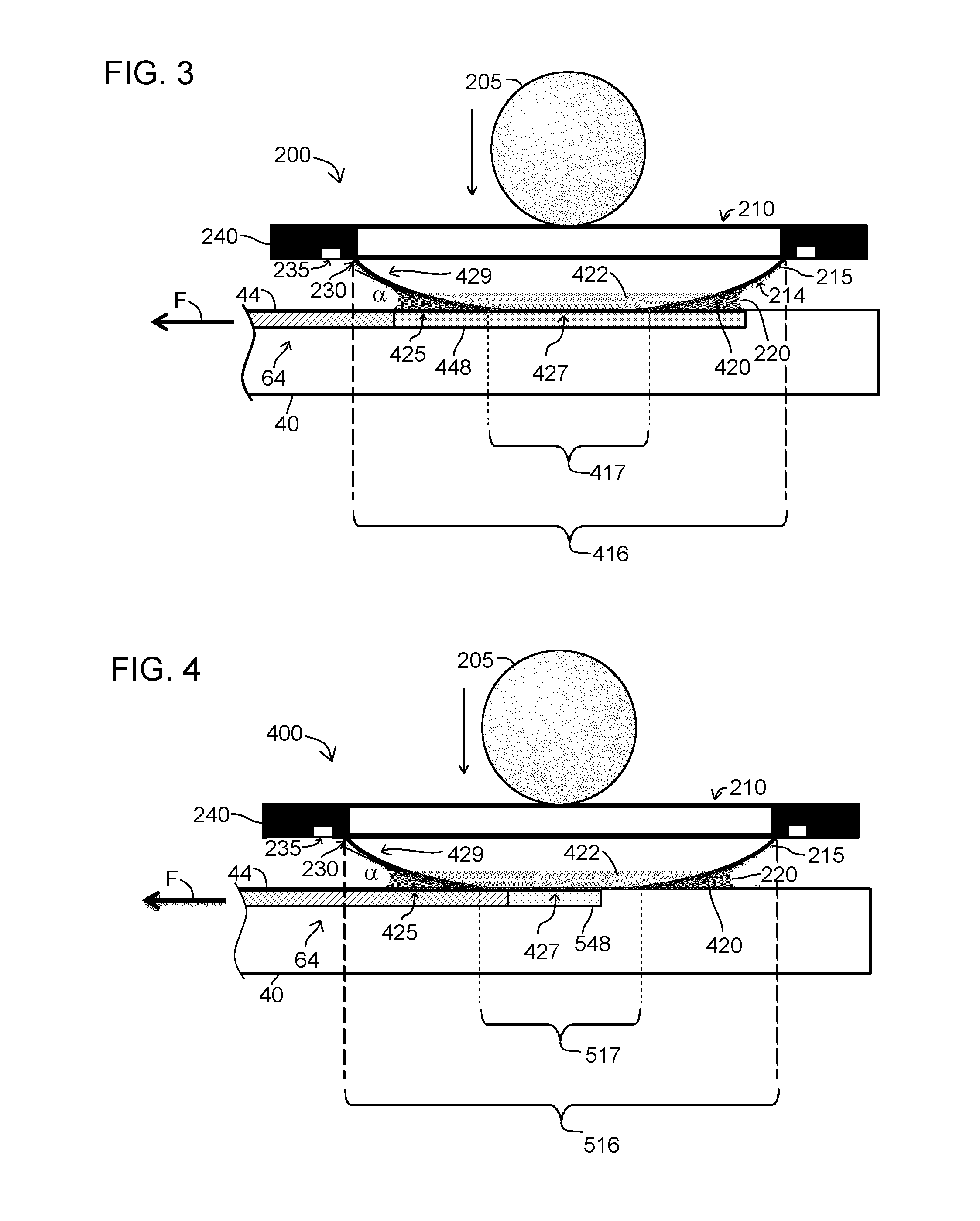Lateral-flow assay device with filtration flow control
a technology of lateral flow and assay device, which is applied in the field of clinical diagnostics, can solve problems such as unsatisfactory lower sensitivity, and achieve the effects of improving filtration efficiency and plasma yield, fast and reliable flow, and better control of filtration ra
- Summary
- Abstract
- Description
- Claims
- Application Information
AI Technical Summary
Benefits of technology
Problems solved by technology
Method used
Image
Examples
Embodiment Construction
[0030]The following description relates to certain embodiments for a filter design for a lateral-flow assay device. It will be readily apparent that the embodiments described herein are intended to be merely exemplary and therefore numerous other variations and modifications are possible. In addition, several terms are used throughout the following discussion such as “first”, “second”, “above”, “below”, “top”, “bottom”, “lateral” and the like for purposes of providing a suitable frame of reference in regard to the accompanying drawings. To that end, these terms should not be regarded as being overly restrictive in terms of the scope of the described apparatus and methods, unless otherwise specifically indicated herein.
[0031]It should further be noted that the accompanying drawings are not necessarily presented to scale and therefore no narrowing interpretation should be made in terms of dimensions that have been depicted.
[0032]As used in this specification and the appended claims, t...
PUM
 Login to View More
Login to View More Abstract
Description
Claims
Application Information
 Login to View More
Login to View More - R&D
- Intellectual Property
- Life Sciences
- Materials
- Tech Scout
- Unparalleled Data Quality
- Higher Quality Content
- 60% Fewer Hallucinations
Browse by: Latest US Patents, China's latest patents, Technical Efficacy Thesaurus, Application Domain, Technology Topic, Popular Technical Reports.
© 2025 PatSnap. All rights reserved.Legal|Privacy policy|Modern Slavery Act Transparency Statement|Sitemap|About US| Contact US: help@patsnap.com



